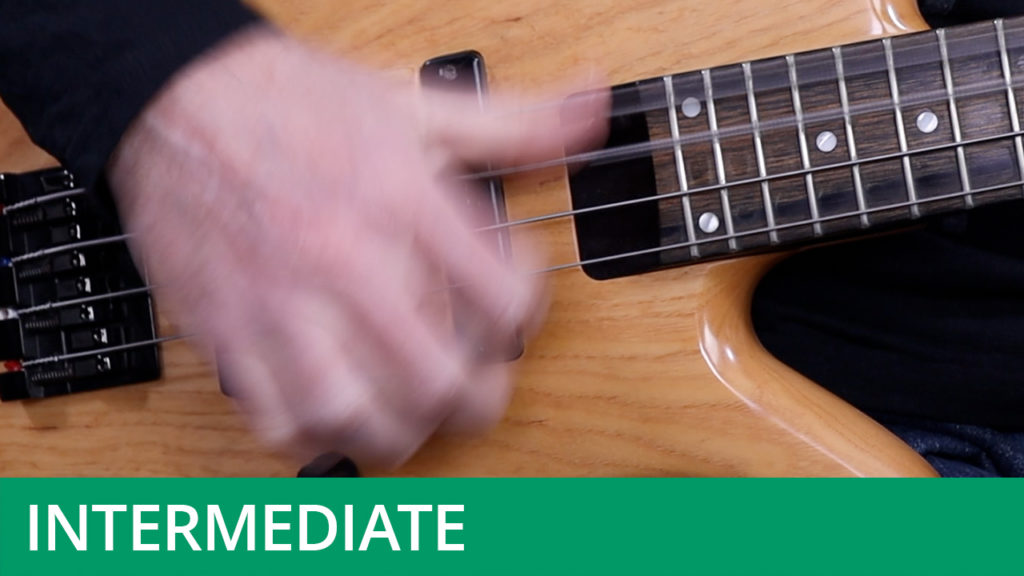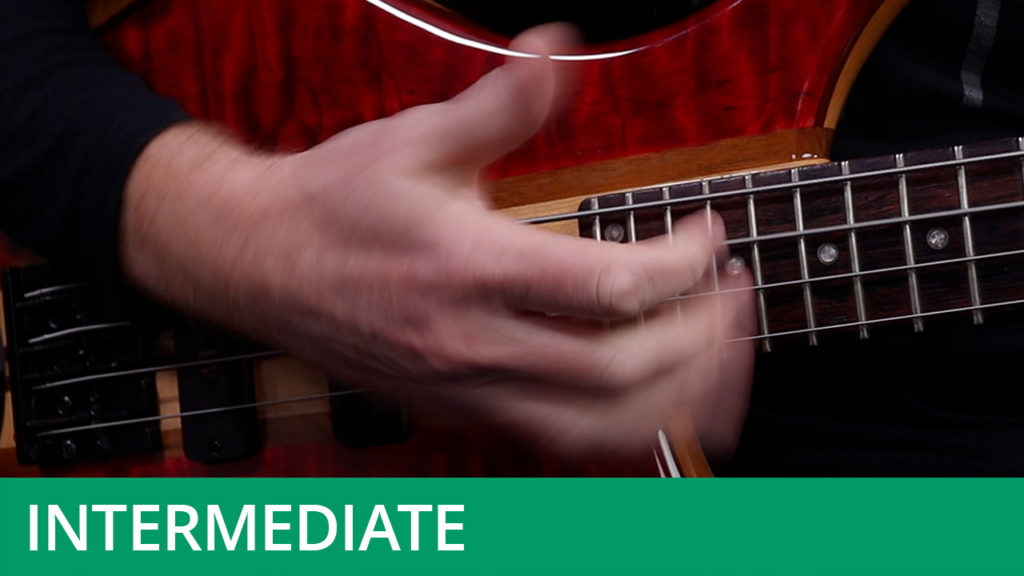Slap Bass Study #1
Course Duration: 45 Minutes | Difficulty Level: 4
This slap study is written in 12/8 time and is therefore played with a shuffle feel. Playing slapped lines against this feel is far less common than playing over straight sixteenth note-based grooves and as a result, is something that many bass players struggle with. In addition, this piece also features tenths, popped double stops, and some tricky unison parts.
Don’t forget to hit the Download Resources button above in order to download the PDF transcription and audio files for this piece (available to subscribers only). The transcription is available with TAB and without, for those who wish to work on their reading skills.



